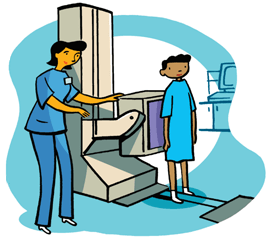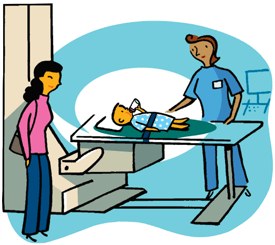Your child’s doctor may order a gastric emptying study if he or she is having stomach pain, nausea (feeling sick to the stomach), vomiting, weight loss, or the feeling of being very full (bloated) after eating. The test, done by the nuclear medicine department, will let the doctor see how fast food in the stomach empties into the small intestine. Nuclear medicine is the best way to watch how food is emptied and how well the stomach and smaller intestine are working.
For older children and teenagers, a very small amount of tasteless radioactive material is added to a solid meal. For babies, the radioactive material is added to formula or milk. The amount of radioactive material is very safe and has about the same amount as an X-ray. The energy that comes from the radioactive material can be seen by a special camera that creates images (pictures) for the radiologist to study.
If your child eats the solid meal, many images will be taken of the stomach over the course of approximately 3 hours. Each set of scans takes about 1 minute, but they must be repeated every 20 minutes and then every 30 minutes for about 3 hours. If the liquid study (MILK Study) has been ordered for your child, he or she will have images taken continuously for a little over 1 hour. A nuclear medicine doctor will look at the images and give your child’s doctor a report, which will help him or her decide what treatment is best for your child.











